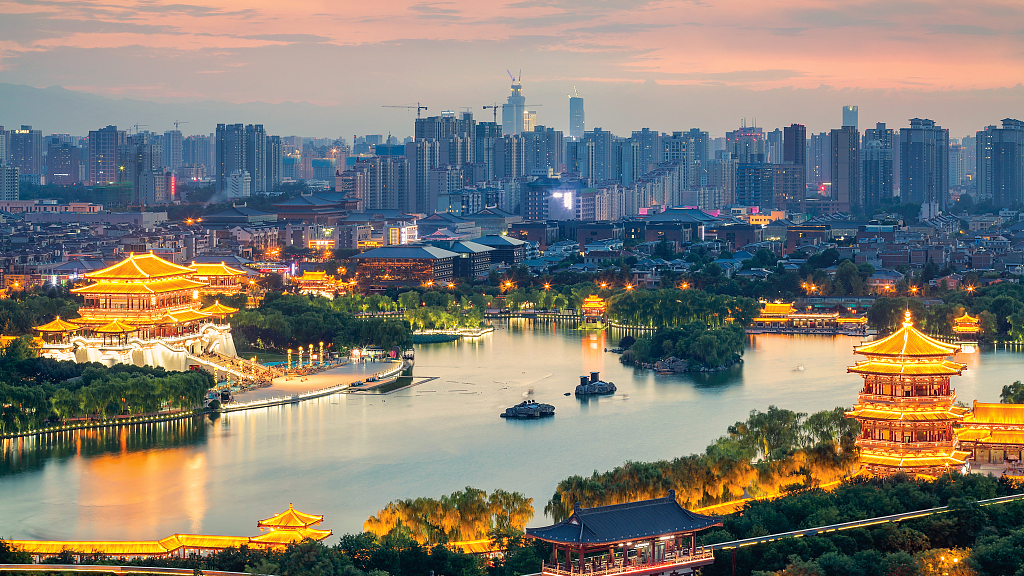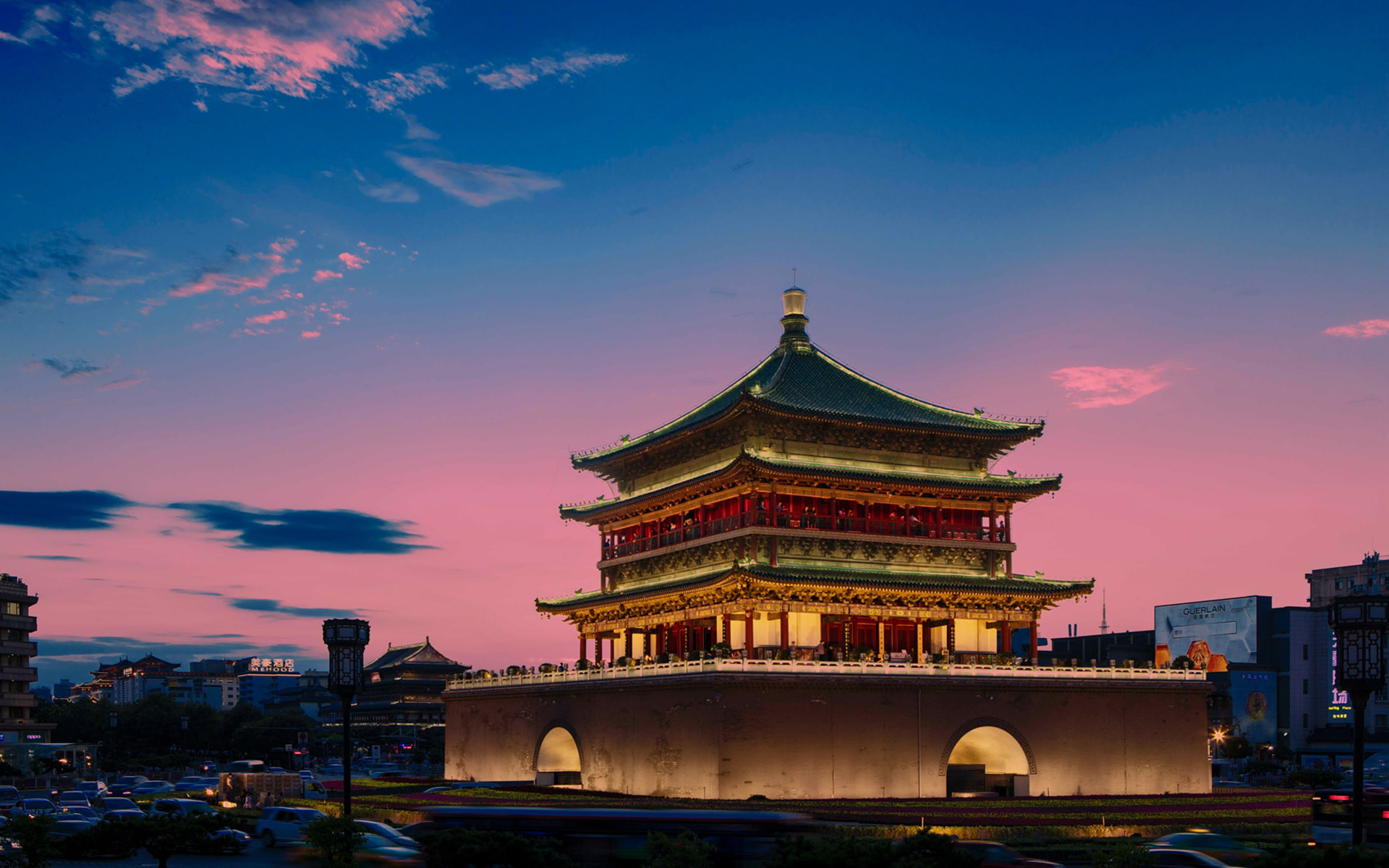🏮 Xi'an: A Glimpse into Ancient China
Xi'an, the capital of Shaanxi Province, is one of the oldest cities in China and the starting point of the ancient Silk Road. With a 3,000-year history, it served as the capital for 13 dynasties, making it a cultural and historical treasure trove. Known for the Terracotta Army, Xi'an blends ancient traditions with a modern, vibrant city life.
📅 Best Time to Visit Xi'an
- Spring (March-May): Mild weather, blooming flowers, and comfortable sightseeing.
- Autumn (September-November): Crisp air, colorful foliage, and fewer crowds—ideal for outdoor exploration.
- Avoid: Peak summer (June-August) due to heat and tourist crowds.
✈️ How to Get to Xi'an
- By Air:
- Xi’an Xianyang International Airport (XIY) – Direct flights from major cities in China and international hubs like Bangkok, Singapore, and Tokyo.
- By Train:
- High-speed rail connects Xi'an to Beijing (4.5 hrs), Shanghai (6 hrs), and Chengdu (4 hrs).
- By Bus:
- Long-distance buses run to/from neighboring provinces.
📍 Top Attractions in Xi'an
- Terracotta Army (兵马俑)
- UNESCO World Heritage Site housing 8,000 life-sized soldiers from the tomb of China’s first emperor, Qin Shi Huang.
- Xi’an City Wall (西安城墙)
- One of the best-preserved ancient city walls in China. You can walk or cycle along the 14 km-long wall.
- Giant Wild Goose Pagoda (大雁塔)
- A sacred Buddhist site built in the Tang Dynasty, offering panoramic city views.
- Muslim Quarter (回民街)
- Bustling market area famous for street food, souvenirs, and the Great Mosque of Xi'an—one of China’s oldest.
- Shaanxi History Museum (陕西历史博物馆)
- Explore Tang Dynasty relics, ancient ceramics, and Silk Road artifacts.
- Huaqing Hot Springs (华清池)
- An ancient imperial bath complex with scenic views of Mount Li.
- Mount Huashan (华山)
- A sacred Taoist mountain known for steep trails and breathtaking views.
🎟️ Activities to Do in Xi'an
- Cycle the City Wall: Rent a bike and tour the ancient perimeter.
- Tang Dynasty Show: Experience a Tang-era cultural performance with traditional music and dance.
- Hot Spring Spa: Relax at Huaqing Palace’s thermal baths.
- Night Market Shopping: Explore the Muslim Quarter for trinkets, spices, and handmade crafts.
- Visit the Bell & Drum Towers: Iconic landmarks marking the ancient city's center.
🏨 Accommodation in Xi'an
Luxury:
- Sofitel Legend People’s Grand Hotel Xi’an – Historic French-inspired luxury.
- The Ritz-Carlton, Xi’an – Opulent stay with modern comforts.
Mid-Range:
- Citadines Xi’an Central – Ideal for families and long stays.
- Eastern House Boutique Hotel – Centrally located, stylish, and affordable.
Budget:
- Xi’an Xiangzimen Youth Hostel – Traditional courtyard charm.
- 7 Sages International Hostel – Cozy, cultural, and budget-friendly.
🍜 Food and Restaurants in Xi'an
Must-Try Dishes:
- Biang Biang Noodles (Biángbiáng Miàn, 油泼扯面): Thick, hand-pulled noodles with savory chili sauce.
- Roujiamo (肉夹馍): Xi'an’s version of a Chinese hamburger—crispy bread stuffed with spiced meat.
- Yangrou Paomo (羊肉泡馍): Crumbled flatbread soaked in rich lamb soup.
- Dumplings (Jiaozi, 饺子宴): Xi’an is known for dumpling banquets with diverse fillings.
Top Restaurants:
- De Fa Chang (德发长): Famous for its dumpling feast.
- Muslim Quarter Stalls: Sample kebabs, pomegranate juice, and sweet persimmon cakes.
- First Noodle Under the Sun (天下第一面): Known for massive hand-pulled noodles.
🏮 Local Culture in Xi’an
Xi’an, the ancient capital of China, is a city where history and modernity coexist. As the starting point of the Silk Road, its culture reflects a fusion of Chinese traditions, Islamic influences, and imperial heritage. This diverse cultural tapestry is evident in the city’s architecture, cuisine, customs, and festivals.
📚 1. Historical and Cultural Legacy
- Ancient Capital: Xi’an was the capital for 13 dynasties, including the Qin, Han, and Tang dynasties.
- Silk Road Influence: As the eastern starting point of the Silk Road, Xi’an became a melting pot of cultures, with influences from Persia, Central Asia, and Europe.
- Archaeological Treasures: Home to the Terracotta Army, which symbolizes China’s rich imperial legacy.
🕌 2. Religious Diversity and Spiritual Life
Xi’an has a long-standing tradition of religious harmony with multiple faiths coexisting peacefully.
- Buddhism: Established during the Han Dynasty – Giant Wild Goose Pagoda is a key Buddhist site.
- Islam: One of the earliest Muslim communities in China – explore the Great Mosque of Xi’an in the Muslim Quarter.
- Taoism: Rooted in local beliefs – visit Eight Immortals Temple (八仙宫) for Taoist rituals.
- Confucianism: Shapes local values like family respect, education, and moral integrity.
🎎 3. Customs and Social Etiquette
- Greetings: A polite nod or a handshake is common.
- Gift-Giving: Avoid clocks (symbol of death) or white flowers (used at funerals).
- Respect for Elders: Always address elders with honorific titles and deference.
- Dining Etiquette:
- Wait for the host to invite you to eat.
- Don’t stick chopsticks upright in rice—it symbolizes offering to the dead.
🎉 4. Festivals and Celebrations
- Chinese New Year (春节): Marked by fireworks, lion dances, and family feasts.
- Mid-Autumn Festival (中秋节): Celebrated with mooncakes and family reunions.
- Lantern Festival (元宵节): Illuminated lantern displays at historical sites.
- Xi'an International Lantern Festival: Held annually at Tang Paradise, featuring spectacular light displays.
- Ancient City Wall Marathon: A unique running event along the 14 km-long city wall.
🍜 5. Culinary Traditions
Xi’an cuisine, or Shaanxi cuisine, is known for its bold flavors, hand-pulled noodles, and savory meats.
Signature Dishes:
- Biang Biang Noodles (油泼扯面): Thick, hand-pulled noodles in a spicy sauce.
- Roujiamo (肉夹馍): Xi’an’s "Chinese hamburger"—crispy bread filled with spiced meat.
- Yangrou Paomo (羊肉泡馍): Crumbled flatbread in a rich lamb stew.
- Dumpling Banquet (饺子宴): Artistic dumplings with varied fillings, often served in shapes symbolizing good luck.
✅ Cultural Insight: The Muslim Quarter is a cultural and culinary hub where you can taste Halal specialties and purchase Silk Road souvenirs.
🎨 6. Arts, Music, and Traditional Crafts
Xi’an’s cultural identity is showcased through its performing arts and craftsmanship.
- Tang Dynasty Music & Dance: Experience Tang-style performances with lavish costumes and ancient melodies.
- Shadow Puppetry: Traditional Chinese storytelling through shadow figures against a screen.
- Paper Cutting: Intricate designs symbolizing prosperity and good fortune.
- Calligraphy: Xi’an is home to the Stele Forest Museum, which preserves ancient stone inscriptions.
☯️ 7. Modern Life with Ancient Roots
While deeply rooted in history, Xi’an is a modern metropolis:
- Cultural Fusion: A mix of Han Chinese customs with Silk Road influences.
- Urban Development: High-tech zones and modern shopping malls stand beside ancient pagodas and city walls.
- Education and Innovation: Xi’an is a leading hub for scientific research and higher education.



